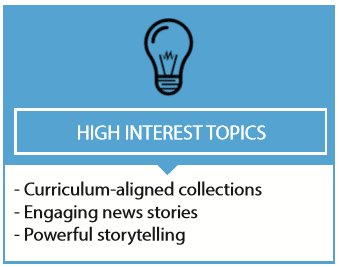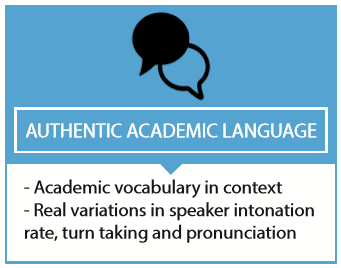Last Updated on October 18, 2017
 The compelling audio stories on public radio are the perfect authentic listening situations to engage students and improve their listening. Effective listening is a critical skill as our communication technology and business environments continue to evolve. Listening to non-fiction in an accessible, narrative format helps students gain skills and knowledge that align to their curriculum. Here are 7 critical skills students can gain from listening to Listenwise stories:
The compelling audio stories on public radio are the perfect authentic listening situations to engage students and improve their listening. Effective listening is a critical skill as our communication technology and business environments continue to evolve. Listening to non-fiction in an accessible, narrative format helps students gain skills and knowledge that align to their curriculum. Here are 7 critical skills students can gain from listening to Listenwise stories:
1. Real-World Experiences
Public radio from across the country exposes students to high quality descriptions and challenging, authentic content. Public radio stories feature academic language, authenticity, emotion and tone. They provide students access to real people and real world issues, without limiting the vocabulary or adjusting the sentence structure. Hearing first hand from people in the news helps students make an emotional connection to events.
 2. Academic Language
2. Academic Language
Students can listen 2-3 grade levels above what they can read, and listening to a variety of topics provides students with exposure to a wide range of academic language. Complex texts and stories have complex vocabulary and incidental exposure when listening helps students learn the meaning of words through context. Using Listenwise allows educators to stretch students’ receptive abilities and increase their acquisition of academic language, which is critical for educational success.
3. Comprehension
Listening is strongly correlated to reading comprehension and academic success. The ability to focus on listening and storytelling is important, and building classroom instruction around stories can improve students’ listening skills and overall comprehension. Starting in middle school, listening has been proven to be a dominating influence on reading comprehension. Recognizing words while listening and understanding oral language is the foundation to complex language skills needed for comprehension.
4. An Ear for Language
Listening to interviews and news stories helps students develop an ear for language. It’s is critical for English learners to have exposure to a variety of native speakers but it’s also important for all students to understand different dialects, accents, cadences and pronunciations. Part of becoming a good reader and writer is developing an ear for good syntax and rhythm. An appreciation of language and the power of words can be developed by listening to stories on Listenwise.
5. Creativity and Visualizing Skills
Every time a person hears something, the brain visually simulates what it hears. This makes listening an extremely visual medium with great potential for use in teaching and learning. When students listen to a story, they use the words to create mental images, they simulate what it’s like to “be there” in a scene. Visualizing creates personal links between the listeners and the content and this creates a more meaningful experience. Students who visualize as they listen or read not only have a richer experience but can recall the content for longer periods of time.
6. Cross-Curricular Connections
Listenwise audio stories allow students to connect ideas across the curriculum. These stories also connect content of a discipline to disparate ideas and the real world. Stories such as A New Human-like Species help students connect the science of archaeology, the social studies content of early human history, and current events in the world. Charles Dickens Reflects on Society connects the literature of author Charles Dickens to the Industrial Revolution and Child Labor.
7. Empathy and a Point of View
Listenwise provides students the opportunity to understand another’s point of view and develop empathy for people who are different from themselves. Listening to stories that share points of view and experiences of people from other circumstances, identities, or cultures helps students identify the humanity in others and understand the world around them. These stories also provide practice in understanding point of view, identifying author’s purpose, analyzing reasoning and evaluating evidence in an audio story.
